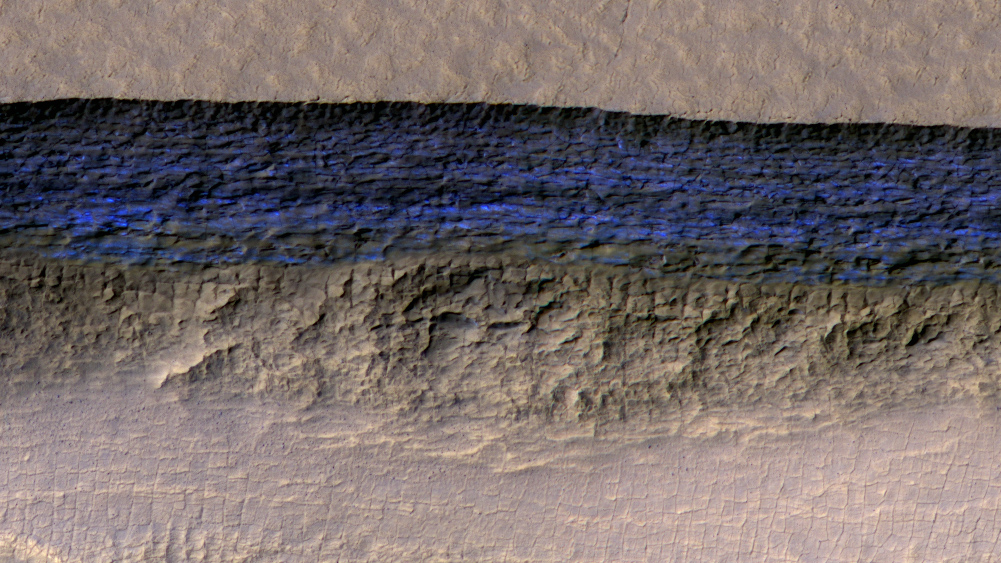 A cross-section of a thick sheet of underground ice is exposed in this enhanced-color view from the High Resolution Imaging Science Experiment (HiRISE) camera on NASA's Mars Reconnaissance Orbiter.
A cross-section of a thick sheet of underground ice is exposed in this enhanced-color view from the High Resolution Imaging Science Experiment (HiRISE) camera on NASA's Mars Reconnaissance Orbiter.
A University of Arizona-run camera orbiting Mars has detected ice a few meters under the planet's surface. That bodes well for future human exploration.
It's not a surprise that there's ice on Mars. But UA planetary scientist Shane Byrne said its location in cliffs so close to the surface at the mid-latitudes makes it an important source of water when humans explore the planet.
"Now what we've seen with this discovery and some other over the previous year, is that there is plenty of ice there just below the surface, and these cliffs show the ice really reaching almost all the way up to the surface," Byrne said. "It's just a thin layer of dirt on top of the ice so an astronaut with a bucket and a shovel can collect all the water they would ever need. That's going to be a boon for future explorers."
Byrne said scientists don't know what's causing the cliffs to actively retreat and expose the ice, but it's an ongoing process that the UA's HiRISE camera has been documenting.
The exposed ice reveals new information about the ice sheets' layers and structure, and the planet's climate history, Byrne said.
Studying Mars' climate can help scientists understand ongoing climate change on Earth, he said.


By submitting your comments, you hereby give AZPM the right to post your comments and potentially use them in any other form of media operated by this institution.